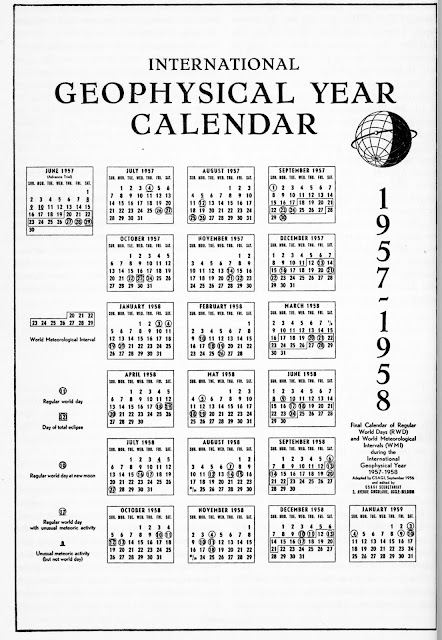I am going to re-hash a little and add to what I said in an earlier post about the IGY calendar, because that is the subject of the second article in IGY Bulletin #2. (Anyway, a little review is appropriate before the IGY quiz I am thinking about administering.)
Recall that the IGY aimed, when appropriate and possible, to make synoptic (simultaneous, at different locations) measurements of geophysical phenomena across the globe, so that a snapshot in time could be taken for a particular phenomenon. The World Days program was established to enable even more intensive measurements during some periods of the IGY.
The article explains that there were three classes of days or periods during which special experiments or more intensive observations were made:
1. Regular World Days - three or four days each month, selected in advance. Two are consecutive days during new moon (e.g., 8/25-8/26/57 in the calendar below; others are at times of special meteor showers such as the Perseids, 8/12/57) or near one of the lunar quarter phases (e.g., 1st quarter, 7/4/57). RWDs also included total solar eclipses (e.g., 10/23/57) with adjacent days.
2. World Meteorological Intervals - series of 10 consecutive days, every three months, including a solstice or equinox (e.g., 9/18-9/27/57).
3. Special World Intervals - designated during the IGY when forecasts suggest high solar activity, such as the magnetic storm of February, 1958.
 |
| Calendar of special IGY days, from IGY Bulletin #2, August, 1957 |
By the way, if you haven't already noticed, most images that I include are shown enlarged in a new window if you click on them.
No comments:
Post a Comment